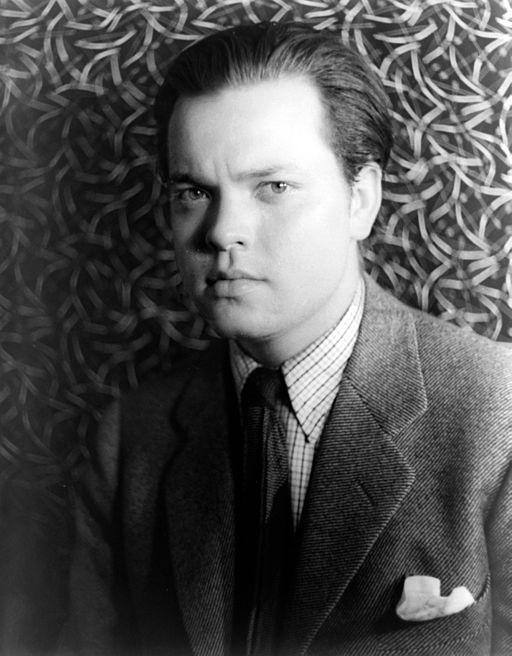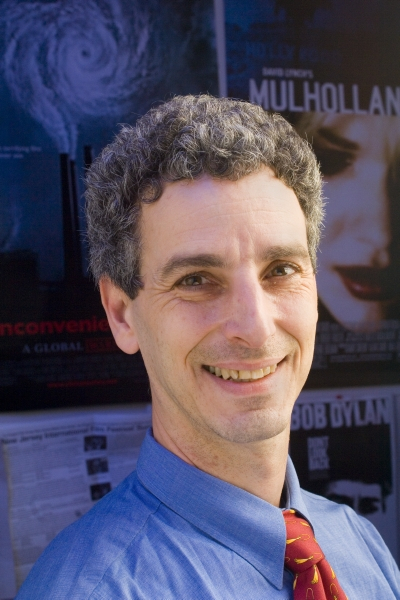Remembering Orson Welles on His 100th Birthday
Rutgers Cinema Studies Professor Al Nigrin on what everyone should know about the famed filmmaker, how Welles’ influence endures and why he enjoys teaching about him

Orson Welles is known as the brilliant, ahead-of-his time filmmaker whose innovative techniques are still used today by renowned directors. He was 25 years old when he made his career-making movie, Citizen Kane, and he would have been 100 on May 6. Thirty years after his death, film students continue to study Welles’ approach. Rutgers Today talked with Al Nigrin, a Rutgers cinema studies professor and executive director of the Rutgers Film Co-op/NJMAC and New Jersey Film Festivals, about Welles’ legacy.
What are three things everyone should know about Orson Welles?
Nigrin: Everybody knows about Citizen Kane, but a lot of people may not know he was a radio star. In fact his most notorious broadcast, on Mischief Night 1938, was his adaption of H.G. Wells’ War of the Worlds. He had set it up so interestingly because his Mercury Theatre on the Air was on CBS, but most people at the time would listen to Edgar Bergen and Charlie McCarthy on NBC. There was no TV, so everyone listened to the radio. Channel surfing existed back then, as well, and Welles figured out how to time his series of fake news flashes for when everyone turned during commercials from NBC to CBS.
Most of the 6 million listeners heard the disclaimer that the broadcast was a dramatization, but because of the realistic news bulletin format, many believed the fictitious Martian invasion on Grover's Mill, N.J. was real, and panic and traffic jams ensued.
This man, who should have been thrown into jail for this broadcast – when police came to the studio to tell him to interrupt the broadcast, he refused – instead, as a result, got a two-picture deal with the RKO movie studio.
Second, everyone should know he made two of the greatest films – Citizen Kane in 1941 and The Magnificent Ambersons in 1942, which was butchered by the studio. Welles was invited to go to Brazil to make a movie promoting Pan-American relations because the Germans were starting to gain support in South America during World War II. Welles thought that was more important so he left and let the studio completely butcher his masterpiece during editing.
The third thing people should know is that he directed a version of Macbeth, known as the voodoo version, at the age of 21 in 1936. It was an all African-American cast and set in Haiti. During the Depression, the government got into the movie-making business as well as theater production through the Works Project Administration. Macbeth was a Federal Theatre Project staging in New York and it drew a mixed audience and was performed by actors who had never done Shakespeare before. It was wonderful, and it tells you he was way ahead of his time. Welles got his big break thanks to the WPA.
Why is Citizen Kane considered one of the best films ever made?
Nigrin: It changed the way that a film speaks to you by developing a complex film narrative that hadn’t been created yet. Most films until this point followed the same structure: an introduction, exposition, development, denouement and conclusion. Citizen Kane starts and stops. It’s a flashback film. You get five different perspectives on this man’s life, which was something that didn’t exist at that point.
Welles also broke new ground in cinematography. His use of light and shadows, borrowed from the lighting present in the German propaganda film, Triumph of the Will, was relatively fresh in the U.S. With his cinematography partner, Greg Toland, he developed a type of look called “deep focus,” which puts everything in a frame in focus. Normally in film, the frame focuses on people, with everything behind them blurry and out of focus.
How is Welles’ influence still seen in films today?

Nigrin: French filmmaker Jean-Luc Godard said, “Everyone will always owe him everything.” As recently as Todd Haynes’ Velvet Goldmine (1998), about the life of a rock star but told in the way Citizen Kane was told, his films influence the films that we see today. Prior to Orson’s work, films were considered a studio’s property; now, it’s an Orson Welles film. He introduced the “auteur” approach to filmmaking, in which the director is involved in the writing, producing, acting and direction of a film. He had his hand in every aspect of his films and has influenced everyone from Woody Allen to Francis Ford Coppola to the French New Wave filmmakers.
What do you focus on when teaching Welles?
Nigrin: I like teaching about him because, A) if it’s not Avatar or Avengers my students don’t really have a sense of history. They need to know how all of the films that they love were influenced by the original grandiose filmmaker, Orson Welles.
There’s something about Welles’ films that show there’s a genius at work.
People think Orson’s first film was Citizen Kane, but that’s not true. He made two films before modeled on the surrealist films of the 1920s: A short, eight-minute film called Hearts of Age, and a second film meant to be part of a play, Too Much Johnson, a 40-minute silent comedy made three years before Citizen Kane. It was recently rediscovered and it’s really quite wonderful. It takes place on rooftops of New York City and it shows that he already had what it took to be a great filmmaker.
-- Dory Devlin
Media contact: Dory Devlin at ddevlin@ucm.rutgers.edu